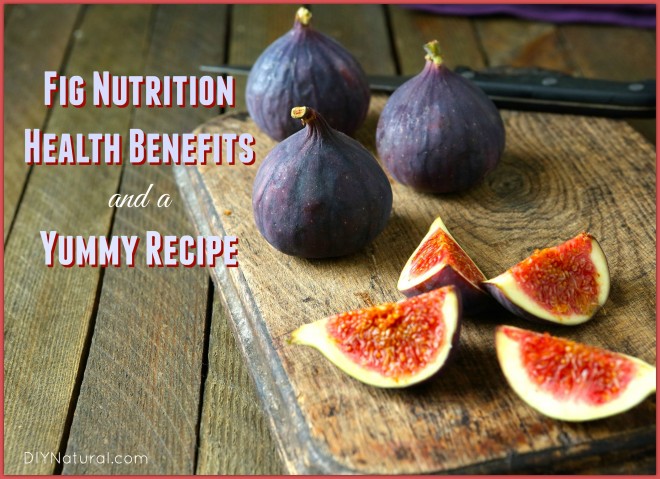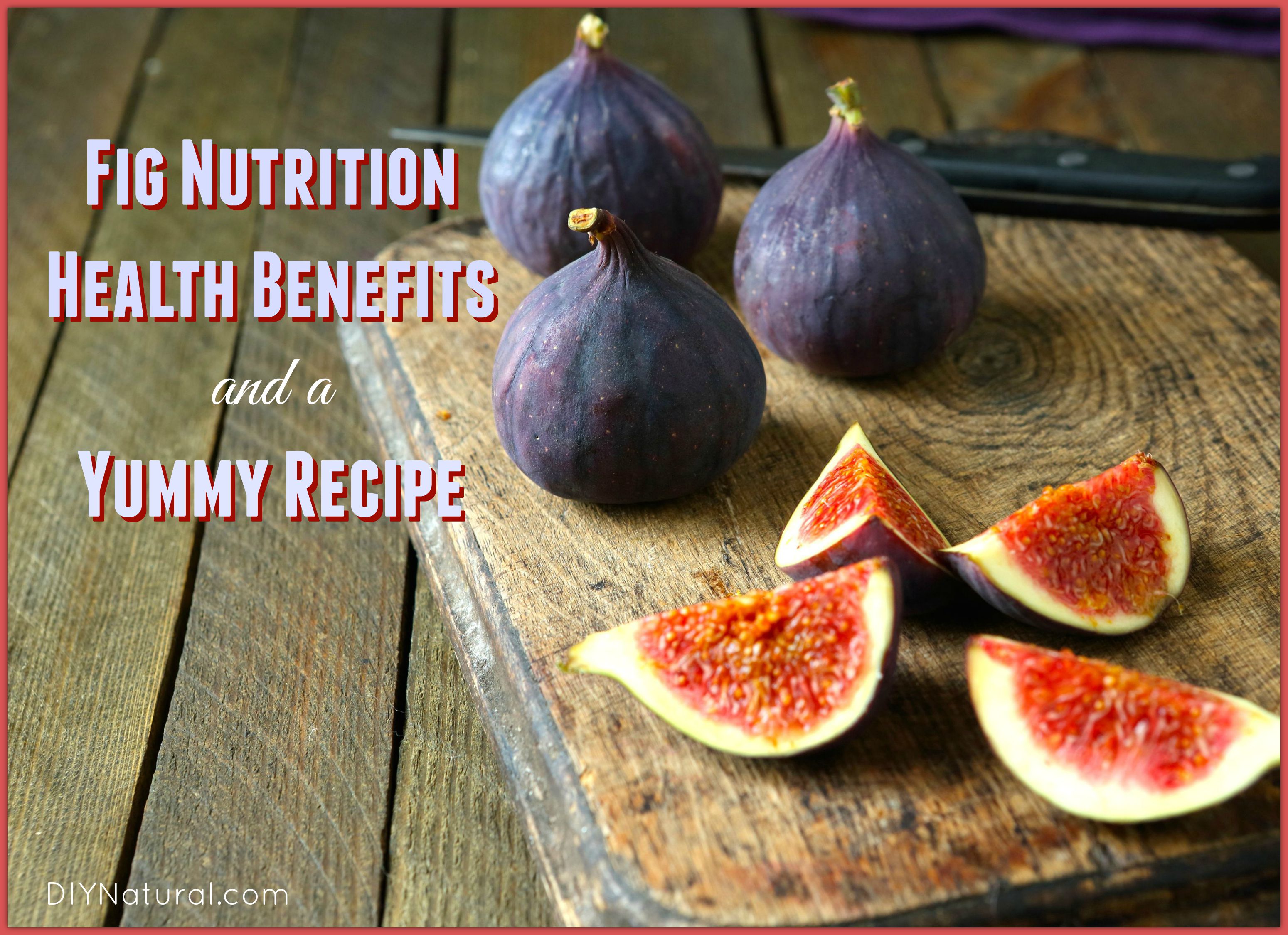
I love figs! They are just starting to come in here in my part of the country. In all my research I’ve found there’s more to them than just the Newton.
Fig Nutrition and Figs Health Benefits
Figs are a powerhouse of nutrition. They contain many microelements that are beneficial for our health. Among those are high amounts of potassium, a whopping 242 mg per 100 g of fruit. Other minerals include calcium, iron, magnesium, zinc, copper, and more. They contain many polyphenols including gallic acid, chlorogenic acid, syringic acid, and ruitin. They also contain ficin in the stems, a sap that breaks down tissue. It was the main ingredient in Adolph’s Meat Tenderizer before they started using bromelain, a similar substance found in pineapples.
Figs do contain high amounts of sugars and may not be suitable for people who need a low carbohydrate diet. However, it is a raw and unrefined sugar, so some may be able to eat them. Most figs are sold dried and moist. As they dry more, more sugar comes to the surface and crystallizes there. This is not mold (I threw out a big batch before I knew this!) and they do not need to be discarded.
Grow My Own Figs? Sure, it’s Easy!
Figs can be grown quite easily in most parts of the US and many other areas of the world. Most figs, in the Ficus family, need full sun and well drained soil to produce fruit. They grow best at a pH of 6.0-6.5, although they can tolerate from 5.5 to 8.0. Figs do very well in zones 7b to 11, although you can create micro climates and have them winter over more easily.
Plant near a south or east facing wall protected from prevailing winds. They can grow right up against a wall, even espaliered like apples or pears. Beware though, that the roots grow very deep and could damage the foundation of the home. I’ve set mine out about 10 feet from the house and they do great. Fertilize 3-4 times a year with a high phosphorus fertilizer. I mix bone meal with my compost, especially in the fall when they are getting ready for winter.
Propagating figs isn’t difficult. Seeds can be planted in vermiculite with peat moss, but they are slow to germinate, often taking months. I’ve had more success with ground layering and cuttings. Ground layering involves a stem, an anchor, and some dirt.
Take a long stem and gently scrape some bark to get to the green inner bark. Lay that side on the ground and bury it in some dirt. Anchor it with a rock or brick and water well. In a few months, roots will have formed and you can clip the stem and plant your new plant.
To do stem cuttings, you can place them in soil and wait, but there’s an easier way. In the spring before the leaves come out, choose 3-4 nice firm twigs with healthy buds. These will look like a green tip. Then cut the stem about 8 inches long at an angle. Take these stems and wrap them in damp paper towel. Place this in a glass jar that is long enough. Cap, but leave the lid somewhat loose. Check them daily for a week to see if they are still damp. After a few days, you’ll notice white bumps forming. This isn’t mold. The bumps will start to form roots. After the roots are an inch long or so, you can plant them. Place the angled end down and cover ¾ deep in soil. Keep damp but not saturated. They’ll do well outside in the later spring in the shade at first. Gradually move them into the sun.
Fig Recipes
One of my favorite ways to enjoy figs is raw. They are soft with a leathery, but edible skin. I also like them cooked. You can stew them in apple juice with spices and orange peel, but I like mine fried!
Pan Seared Figs
Ingredients
- 2-3 cups of fresh figs, cut into quarters
- coconut oil for frying (find great coconut oil here)
- ¼ tablespoon salt (we recommend this salt)
- ½ cup cane sugar (find organic cane sugar here)
Directions
Heat a frying pan to medium heat. Add the oil (enough to cover the bottom lightly) and heat. Place figs in the pan and sprinkle with salt. Sear until edges are browned slightly. Sprinkle sugar over the top and mix. Fry just another minute or so. Place in a bowl and drizzle with pomegranate molasses (recipe below). Serve immediately.
Pomegranate Molasses Sauce
Ingredients
- 4 cups pomegranate juice (find organic pomegranate juice here)
- ½ cup cane sugar
- 1 tablespoon lemon juice
Directions
Simmer the pomegranate juice and sugar until sugar is dissolved. Add lemon juice. Lower the heat and continue to simmer until the mixture reduces to 1 cup. Cool and transfer to a jar. Store in the refrigerator for up to 6 months.
This is great over ice cream too!
Where is the Fig Flower?
Figs do not produce a flower in the traditional sense. The flower is formed internally. Most of the figs that grow in the US need only one plant to produce figs. Other types need a fig wasp to pollinate. It is done internally and you never even see the flower as it is inside out.
Types of Figs
There are about 850 different figs, but only a handful are planted on a regular basis. Brown Turkey is the most popular, followed by Celeste, Hardy Chicago, and Mission. I just got a Texas Everbearing which is suppose to produce fruit all season. So far it has lived up to it’s name. Most figs produce two crops. The first, the “breba” crop, is light and comes in the spring. The later main crop is heavier and the fruit is generally bigger and tastes better.
Figs have been cultivated for thousands of years. The first recorded evidence dates back to 9,400-9,200 BC. It was found in a Neolithic village near the Jordan River. This early form of agriculture predates the cultivation of grains like wheat and barley by more than 1,000 years. The figs we grow today came to the New World in the 1500s. The US is #7 in fig production, growing more than 35,000 tons annually.
New cultivars are developed yearly, although old standards prevail. Some research is being conducted on Mountain Figs which are native to Persia. They can tolerate dry conditions and cold to -40°F. Propagation of these would make them more accessible to northern regions.
Figs have come a long way since that cookie first made in 1892. Why not try to grow some for yourself?
*******




We moved into a house with a fig tree in the fall. We trimmed it way back in early spring because of dead branches. It is growing from new shoots. Does fruit grow from new growth? When will we see fruit?
We severely prune our LSU fig every year and it always grows back vigorously with tons of fruit. No worries Elizabeth!